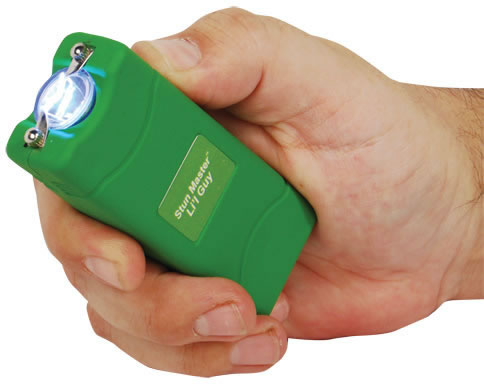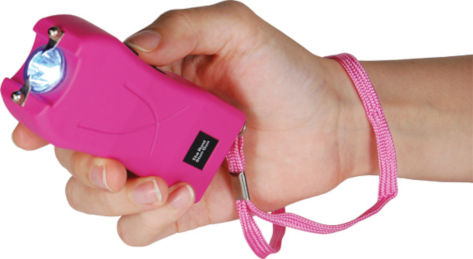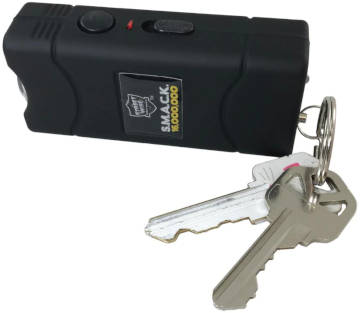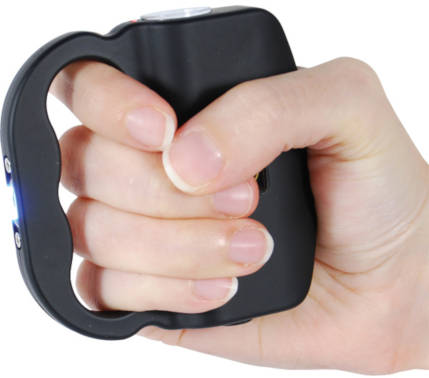How to Use a Stun Gun Properly

Stun guns are powerful self-defense tools designed to temporarily incapacitate an attacker by delivering an electric shock. However, simply owning a stun gun is not enough—you need to know how to use it effectively to protect yourself. This guide will walk you through the essential steps to ensure you can use a stun gun confidently and safely in a self-defense situation.
Understanding Stun Guns: What You Need to Know Before Use
Before using a stun gun, it’s crucial to understand how they function in real-world self-defense situations. Unlike TASER devices, which fire projectile electrodes, stun guns require direct contact with the attacker’s body. The device works by disrupting muscle control, causing temporary incapacitation and disorientation.
Key Points to Know Before Using a Stun Gun:
-
Stun guns require direct contact to be effective.
-
Voltage helps penetrate clothing, but amperage delivers the stopping power (most stun guns operate between 3 and 4.9 milliamps).
-
The most effective areas to target are large muscle groups, such as the upper thighs, hips, and shoulders.
-
Stun guns do not knock people unconscious—instead, they cause intense pain and muscle contraction.
Stun Master Lil Guy 60,000,000 volts Stun Gun
Step-by-Step Guide to Using a Stun Gun
1. Familiarize Yourself with Your Stun Gun
To use a stun gun effectively, you need to be comfortable handling it. Follow these steps to ensure you’re prepared:
-
Read the user manual to understand how your stun gun operates.
-
Practice handling the device to get comfortable with its weight and grip.
-
Test fire it in a safe environment (without touching it to anything) to ensure it’s functioning correctly.
-
Know the location of the safety switch and how to quickly turn it on and off.
Rechargeable Runt Stun Gun
2. Keep Your Stun Gun Charged
A stun gun is useless if the battery is dead. Most modern stun guns are rechargeable, so make sure you:
-
Charge your stun gun at least every two to three months.
-
Use the manufacturer’s charging cable and follow instructions.
-
Store it in a cool, dry place to maintain battery life.
3. Proper Grip and Ready Position
-
Hold the stun gun firmly with your dominant hand.
-
Keep your thumb near the activation button for quick use.
-
If your stun gun has a wrist strap, wear it to prevent it from being knocked away.
4. Aim for Large Muscle Groups
To maximize effectiveness, target areas with large muscle groups:
✅ Upper thigh
✅ Hip
✅ Shoulder
✅ Abdomen
Avoid striking the head or neck, as this can be hazardous and may result in unintended legal consequences.
5. Make Direct Contact and Hold the Stun Gun in Place
-
Press the stun gun firmly against the attacker’s body.
-
Hold the device in place for at least 3-5 seconds to ensure the full effect.
-
The longer the contact, the more effective the stun.
6. Escape Immediately After Stun
The effects of a stun gun are temporary, so take advantage of the attacker’s momentary disorientation to escape and seek help.
7. Report the Incident to Authorities
If you use your stun gun in self-defense, report the incident to law enforcement. Laws regarding the use of stun guns vary by location, so it’s important to be aware of your local regulations.
SMACK Keychain Model in Black
Additional Stun Gun Safety Tips
-
Never test fire a stun gun near flammable materials.
-
Store it in a safe and accessible location (away from children).
-
Do not use it as a joke—stun guns are serious self-defense tools.
-
Check local laws before carrying a stun gun in public.
Final Thoughts
A stun gun can be a highly effective self-defense tool when used properly. By understanding how it works, keeping it charged, and practicing safe handling techniques, you can significantly improve your ability to protect yourself. Remember, self-defense is about preparation—stay aware of your surroundings and be ready to act if necessary.
75 Million volt Talon
Add your comment now!
Post CommentRecent posts
-
06/27/2025Personal Safety Devices for Women
-
06/27/2025Can You Bring Pepper Spray on a Plane?
-
06/27/2025Are Butterfly Knives Illegal?




